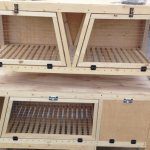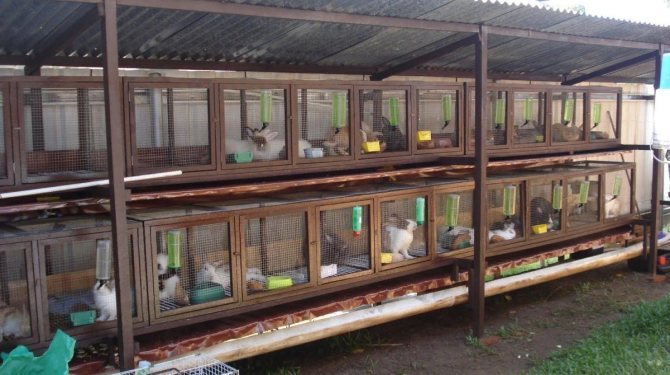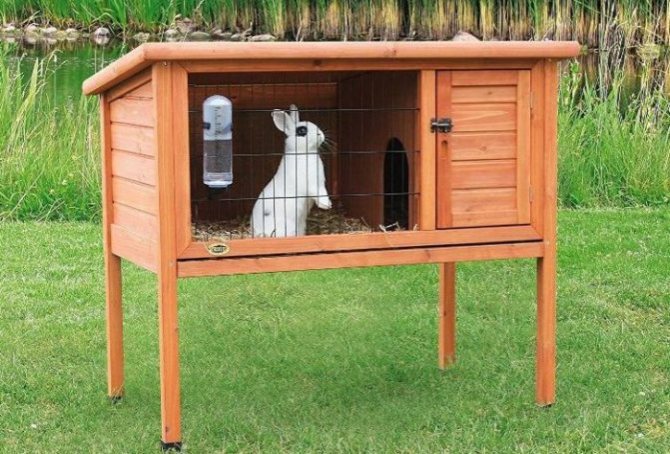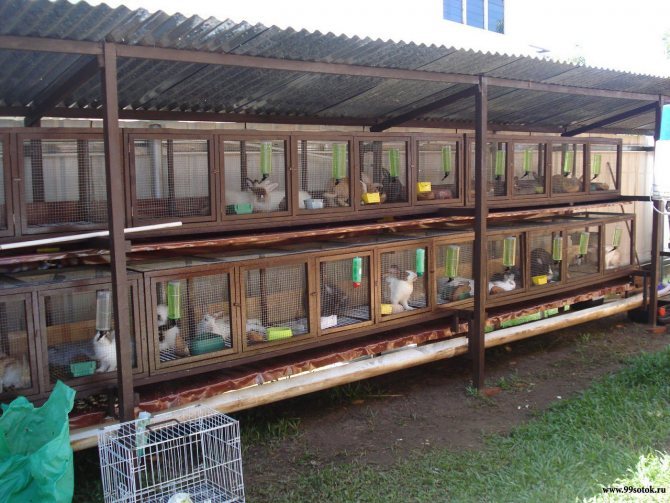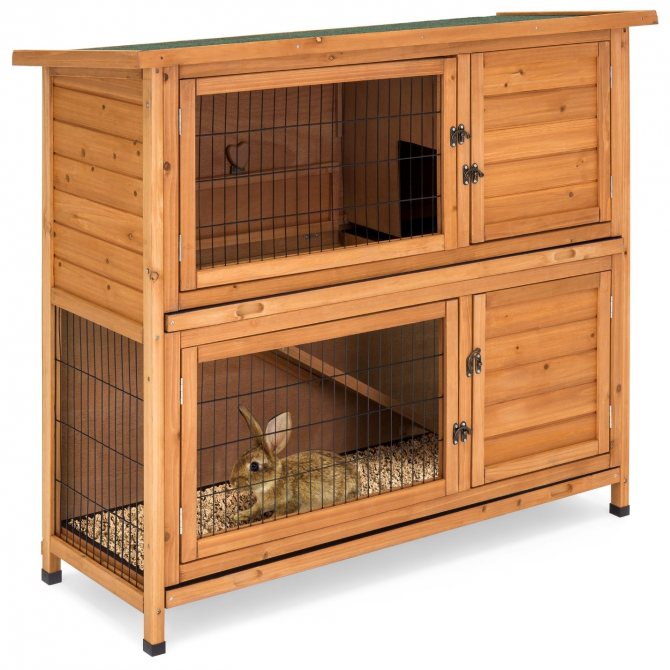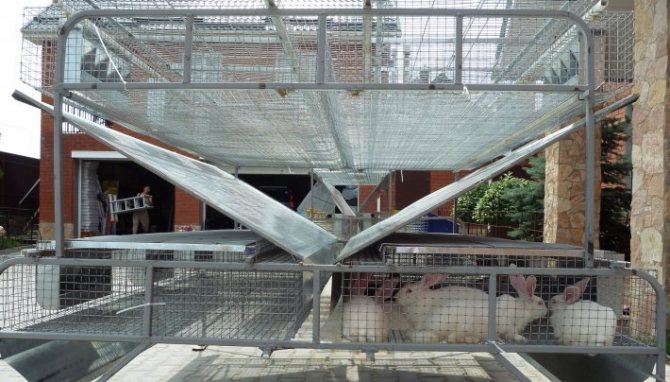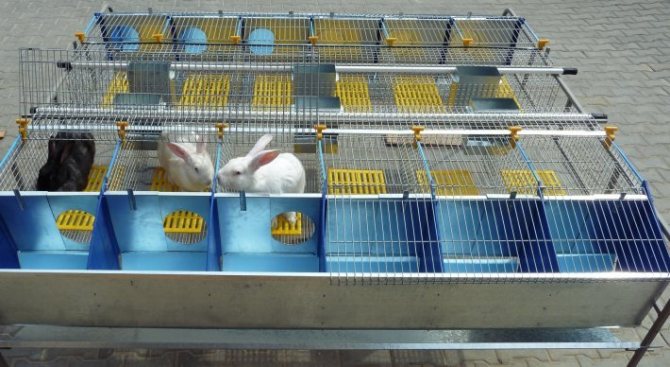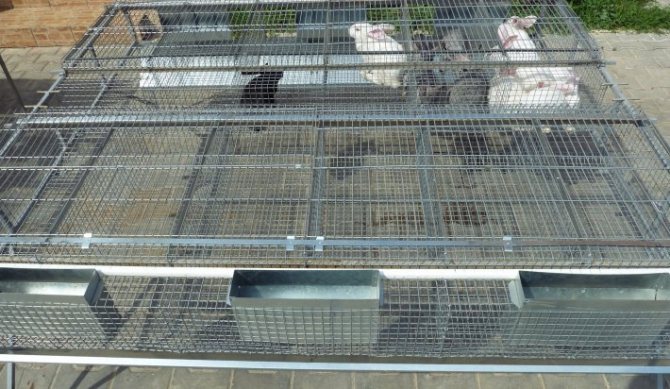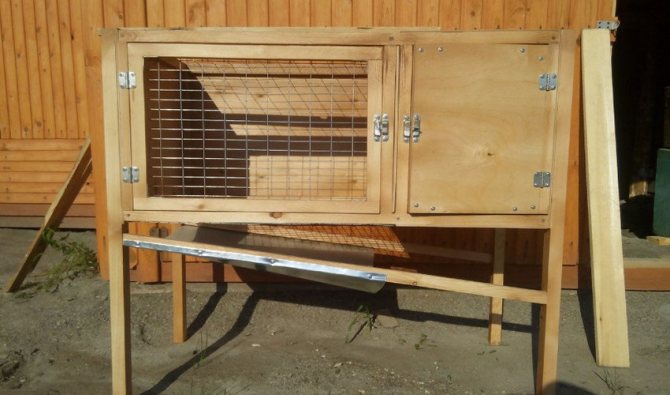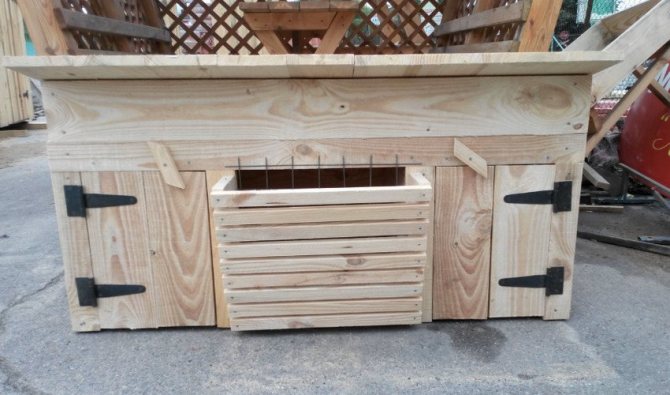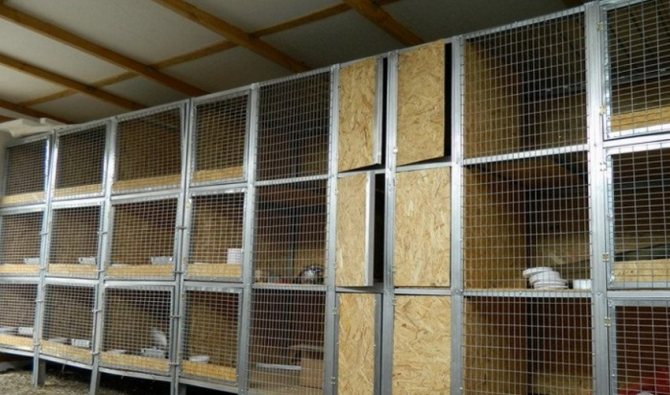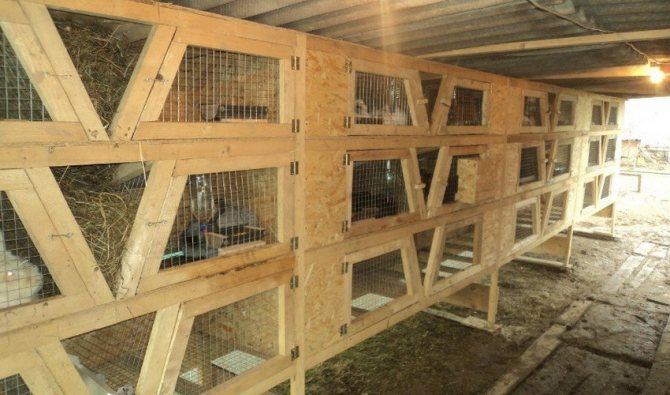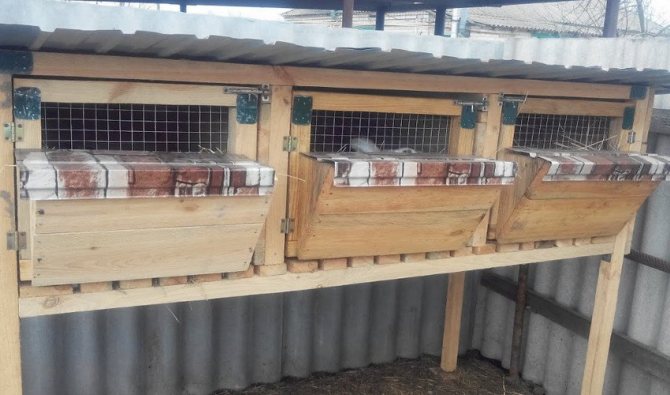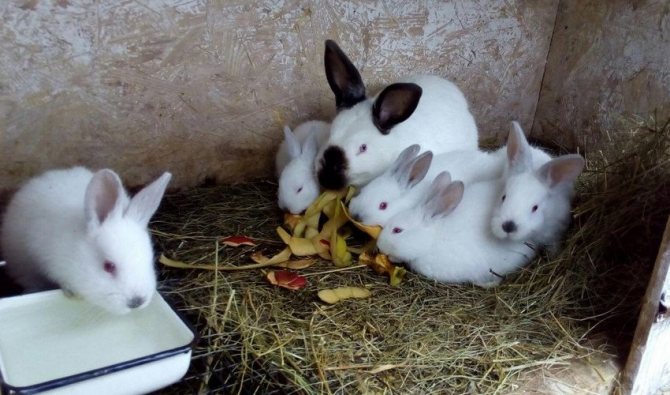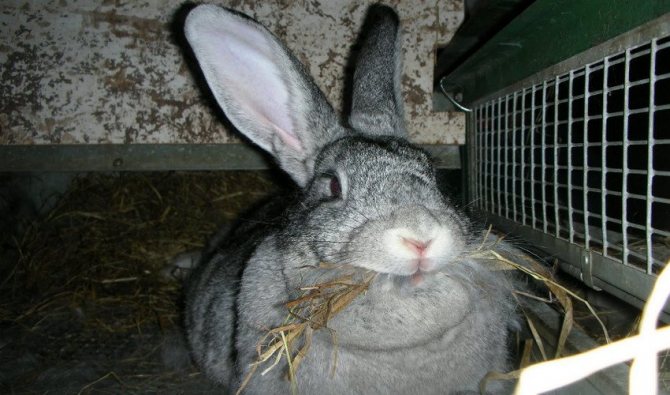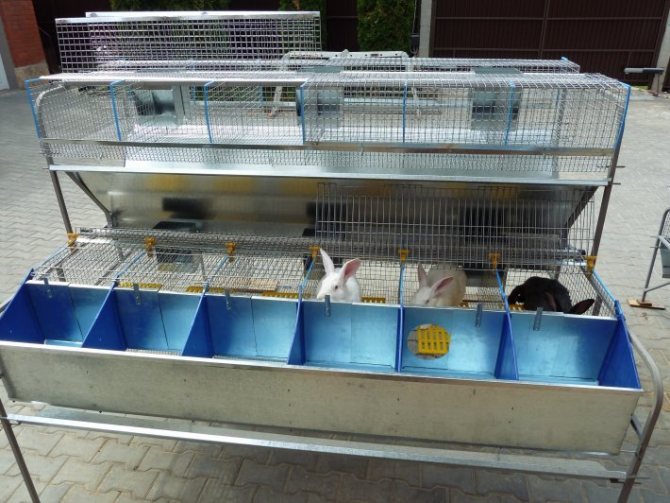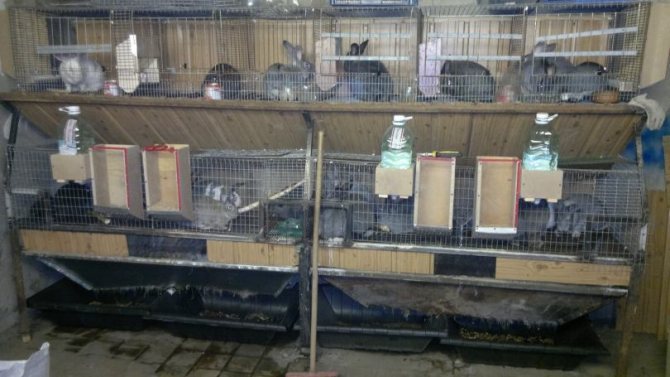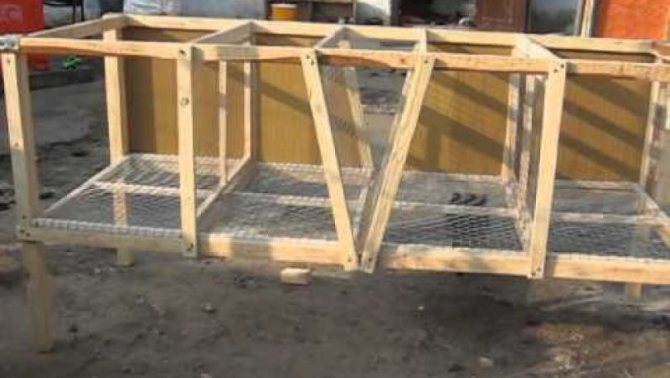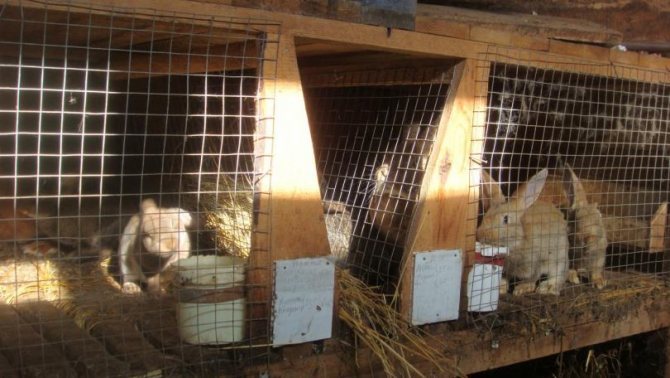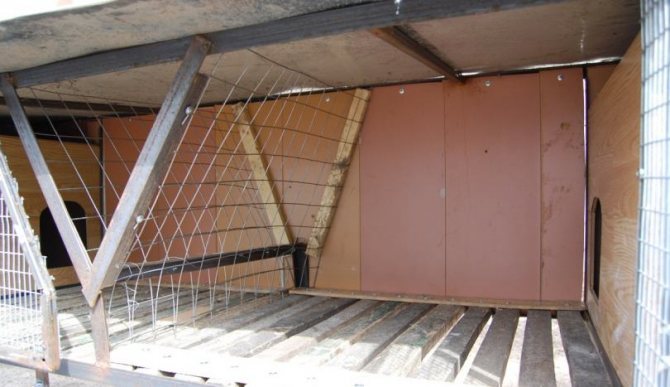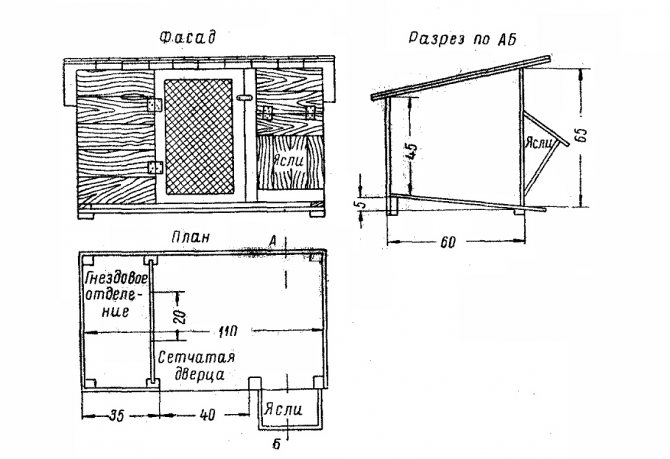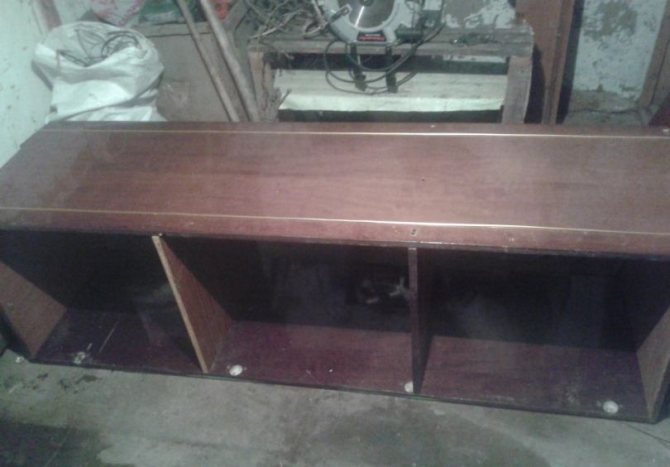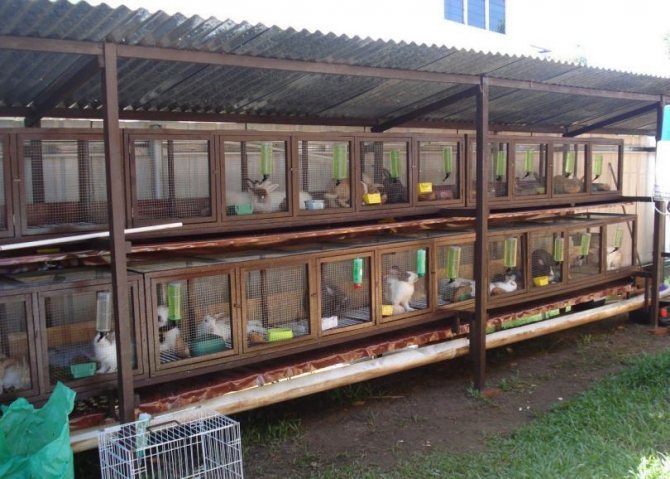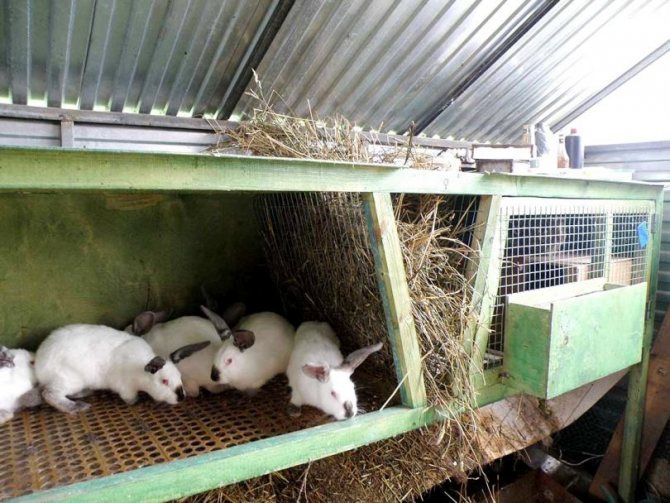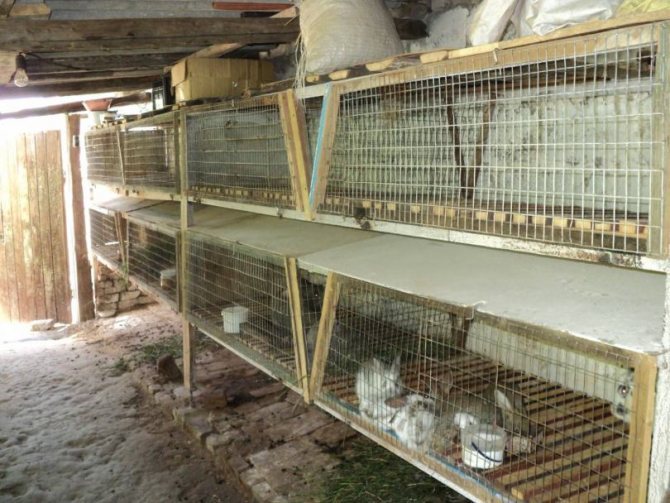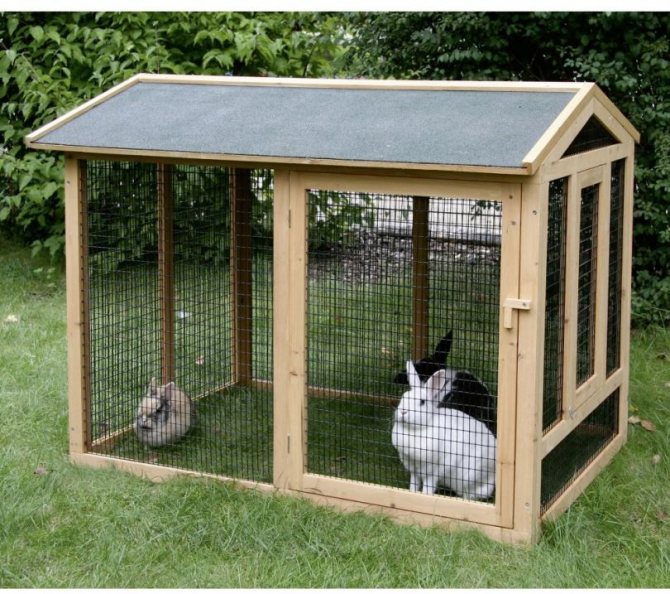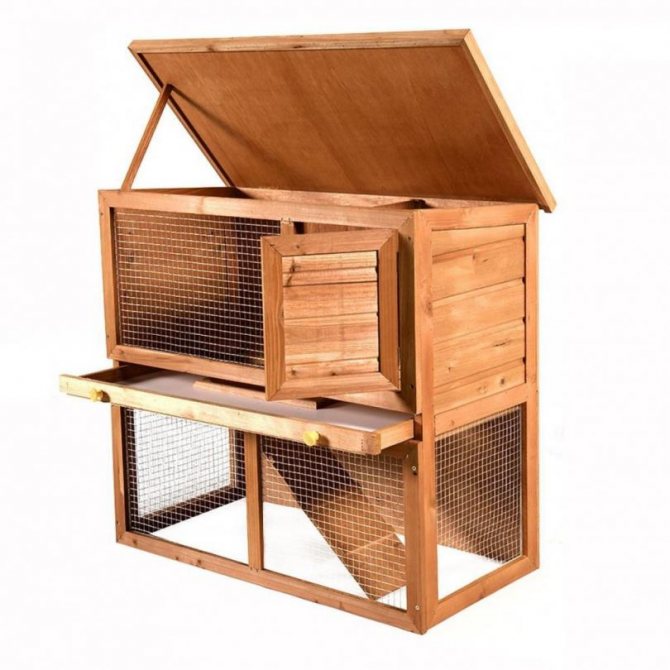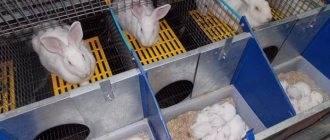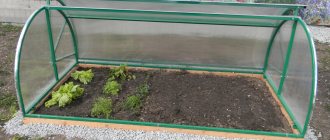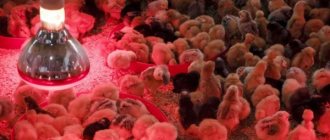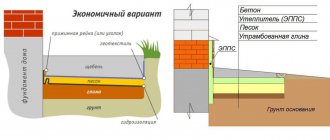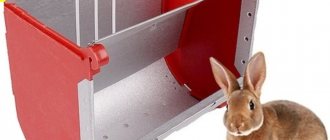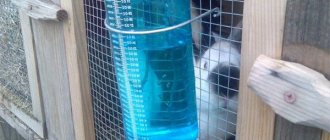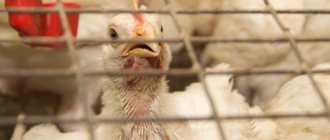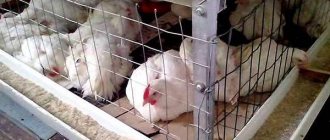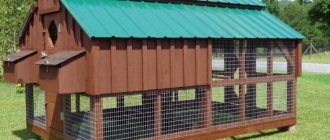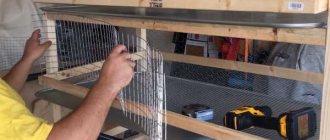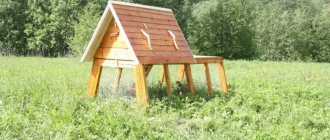It cannot be said that many are engaged in breeding rabbits in their personal plots or in village farms, and every year their insignificant number decreases even more. And yet, with the right approach, such an activity can generate income and provide owners with healthy and tasty meat. The main condition for keeping rabbits is properly made cages, in which the animals will feel as comfortable as possible. How to make them, and what materials will be required for this?
DIY rabbit cages, all sizes and drawings
Benefits of breeding rabbits
The mini rabbit farm has many advantages:
- Rabbit meat is not only tasty, but also a healthy product with a low calorie content.
- Rabbit liver is very small but considered a delicacy.
- There is also a worthy use for animal skins.
- Although in terms of its qualities, rabbit droppings are inferior to cow and horse manure, it will still serve well when fertilizing the soil in the garden.
- Communication with rabbits gives a lot of pleasant impressions, especially for children.
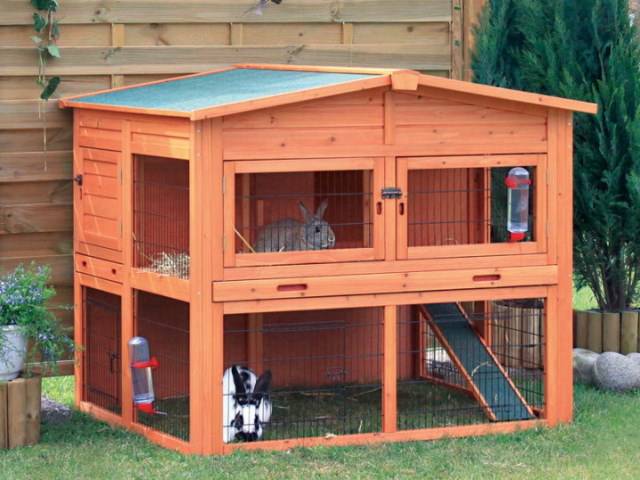
How to build a solid rabbitry
Where to begin
Before you start making the floor, you need to put together a frame, which will become the support for everything. As you already know, the rabbitry will be one meter by seventy centimeters. The bottom frame will be exactly the same size. To do this, you need to pick up sufficiently strong blocks of wood so that they can withstand the entire structure. In order not to undertake the same work later, it is worth immediately making a similar structure for the ceiling of the rabbitry.
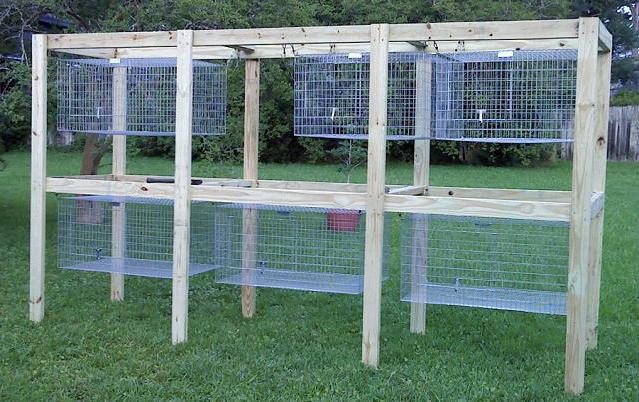

The difficulties of rabbit breeding
Breeding rabbits, of course, involves its own pitfalls:
- The need to slaughter animals. Not every owner will be able to muster up the courage to kill a pet to which he managed to become attached.
- Diseases of animals, provision of prevention and treatment.
- Reproduction. Along with excessive fertility, problems with offspring can arise.
- Preservation of the breed, for which it is necessary to replace the male producer twice a year.
- Providing quality food. The animals are very gluttonous, moreover, they often spoil the food themselves, which needs to be replaced.
- Rats that are attracted to the mini rabbit farm due to the abundance of food.
- The problem with the placement of animals.
If the list of minuses from the maintenance of a mini-farm is not scary, the last difficulty can be easily eliminated by building a solid rabbitry with your own hands.
Warming
In regions with cold winters, additional heating of the rabbitry should be provided.
There are several options:
- At the bottom of the compartment, a "pocket" is made of plywood, into which an electric heating pad is installed. Periodic switching on of the heater at the minimum mode is provided by a transformer.
- Heating and simultaneous illumination are provided by infrared lamps.
- Heat guns of 1.5 kW will come in handy; in severe frosts, it is enough to turn them on at night.
- It is possible to install batteries, to which heat is supplied from a residential building.
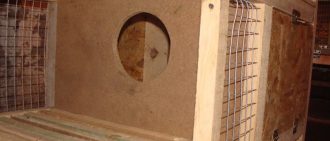

Be sure to read:
How to make a queen cell for a rabbit with your own hands: optimal sizes and drawings
How to build a rabbitry
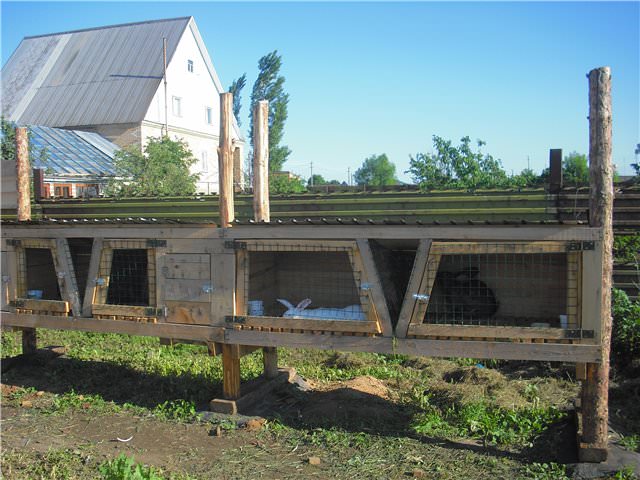

Rabbit cages
When setting up a mini-farm, it does not hurt to take into account the following requirements:
- The structure must be designed for a long service life and have sufficient strength.
- Relative ease of assembly.
- Compliance with vet. standards and the creation of comfort for animals.
- Ease of maintenance, including feeding and manure removal.
Recommended sizes for rabbitries
For two adults, you can make a cage of two sections, 1.4 m long, 0.7 m wide and 0.5-0.7 m high. Cage sizes for a group of young animals: length 2-3 m, width 1 m, height 0.4-0.6 m.
To save space, the rabbitry is built in two tiers, which is also convenient for maintenance.
A young rabbit, up to two months old, needs an area of at least 0.12 square meters. For a female with rabbits, it is necessary to provide an area of 0.6 square meters. Also, for the offspring, a box of 35x25x30 cm is installed inside the cage.
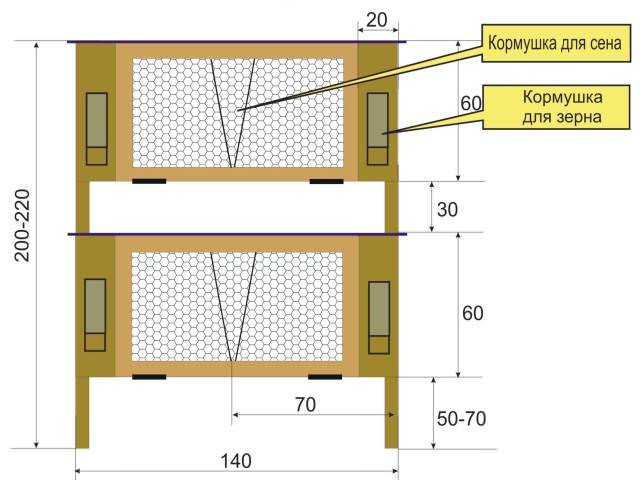

Scheme of a standard rabbitry
Materials for the construction of a rabbitry
During construction, it is important to take into account that rodents will inhabit it, therefore, making cages is better using durable materials.
The wooden structures of the building, to extend the service life, must be sheathed with metal so that the "tenants" do not eat it ahead of time.
To make a wooden rabbitry with your own hands, you will need the following materials:
- Corners and metal pipes.
- Wooden boards, beams, slats.
- Galvanized mesh.
- Roofing material.
- Iron, tin.
- Self-tapping screws, nails, hinges and latches.
The finished drawing will allow you to accurately calculate the consumption of building materials. Ventilation must also be considered.
Antiseptic treatment of wooden parts is undesirable; it can be toxic to animals. The durability of the structure depends on how dry the material used is.
How to make a wireframe
Having chosen a suitable drawing, you can proceed to the construction of a frame, the dimensions of which depend on the number of cells.
For the device of the frame, a wooden beam, metal pipes or galvanized corners are used. If you make a structure of metal, then you will need welding or special fasteners. Timber buildings are much more popular due to their relative cheapness and lightness. Usually, 5x5 cm bars are taken for this purpose.
The knocked-down frame is filled with mesh modules on wooden frames.
Rabbit frame sheathing
Walls
The structure is sheathed with a galvanized chain-link (by the way, from the English rabbit - a rabbit), with a mesh size of 20x20 mm. The mesh is applied from the inside. In this case, the wooden parts will be more intact, and the animals will not be able to accidentally injure themselves on the fasteners.
The mesh is cut to the size indicated by the drawings and fixed with special clamps. If you want to save money, you can completely do without clamps using pliers and wire.
To prevent drafts, to which rabbits are very sensitive, the back wall is made deaf and sewn up with plywood, polycarbonate or other suitable material. Side walls are also sometimes made deaf.
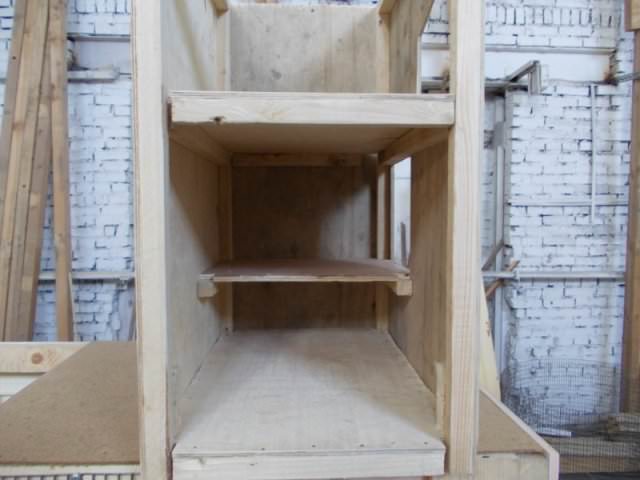

The walls of the rabbitry are upholstered with plywood and other materials to prevent drafts
A sennik is arranged between the sections of the cages, for the walls of which they take a net with larger cells (50x50), so that it is more convenient for the animals to extract food.
Doors
It is better to make the rabbitry doors hinged. They are assembled from wooden blocks and fixed at the bottom of the structure, and on top there is a reliable lock or lock.
Metal corners make the doors heavier, so it is advisable not to use them.
Rabbit floor arrangement
For the floor, you will need a mesh with small cells (25x25 mm).
The use of a mesh makes cleaning easier. The manure falls down and accumulates in a special place, from where the manure is then removed.
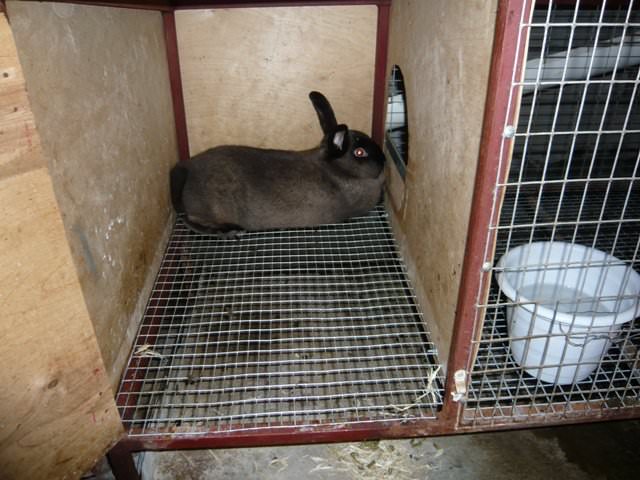

Rabbit house with mesh floor
If the floor is mesh, then in winter it is cool in the cages and the legs of the animals sometimes freeze, but in the summer ventilation is facilitated.
The floor from the chain-link brings certain inconveniences to the inhabitants themselves. To protect the animals from damage on their paws and the appearance of corns, the mesh floor can be closed on top with plywood. In this case, the plywood sheets should be easily removed for periodic cleaning and drying.
Often, when installing the floor, gratings made of planed wooden bars are used. Leave a gap of at least 10 mm between the bars. But of course, such a floor will be actively tested "for the tooth".
Rabbit roof
Any roofing material that is resistant to moisture is suitable for covering the roof of the rabbitry, so flat slate should not be used.
The metal roof can overheat in the sun, then the temperature in the cages will be excessively high, and the animals may suffer from the heat.
Warming cells in winter
A comfortable temperature for rabbits can be considered a range from +10 to +20 degrees. Therefore, in winter, the dwellings of animals must be insulated. If there is no heating in the rabbitry, you can at least do the following:
- Insulation of doors. Doors in winter are sewn up with sheets of plywood or other durable material. The best option is glass frames, which will keep light in the rabbitry.
- Floor insulation. For this, a flooring is arranged on top of mesh floors, on which hay is spread.
- Insulation of walls and elimination of cracks.
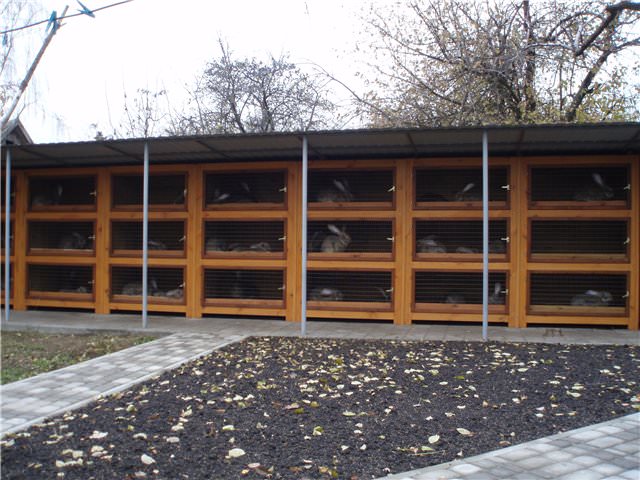

A rabbitry under a canopy
Placement of cells
Rabbit cages can be located in utility rooms, such as a barn, or right on the street. Therefore, they can be divided into three types according to their location and the method of breeding rabbits:
- Year-round outdoor placement of cages, when animals are constantly in the air.
- Year-round keeping pets indoors.
- A combined breeding option, that is, in the winter, the rabbits are indoors, and with the onset of warm weather they are transferred to the street.
Experienced rabbit breeders believe that the most optimal way to breed these animals is to keep them outdoors all year round, as this favors the development of immunity to various diseases and the formation of a healthy, high-quality hairline. In addition, when raising rabbits outdoors, females significantly improve productivity, which increases the number of rabbits in the litter and their endurance.
Street cages
Rabbit cages are most often installed on the street in the event that it is planned to breed a large number of animals - one hundred or more individuals.
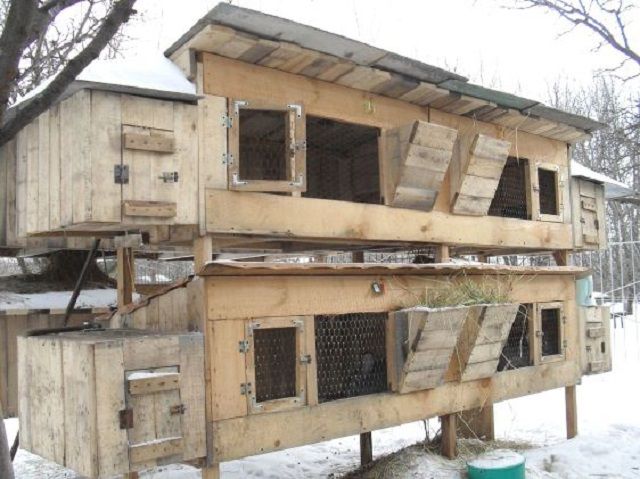

Experienced rabbit breeders recommend keeping rabbits outdoors all year round.
The convenience of arranging rabbitries in outdoor conditions lies in the availability of more space and ease of caring for your "menagerie", since each of the cages needs periodic cleaning.
Rabbit cage
For the construction of street cages, sufficiently strong materials are used, since the structure must be reliable and stable - these qualities will help protect rabbits from adverse natural factors, as well as from the penetration of predatory animals into the cages - dogs, foxes, cats or rats.
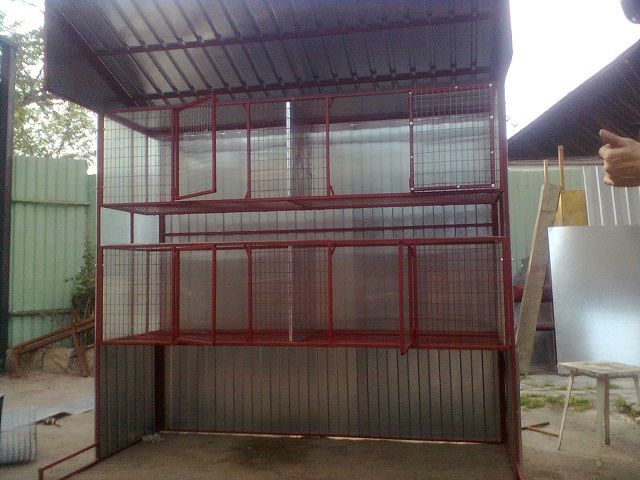

A very good solution for a street cage - a protruding roof visor
It is advisable that the building is located under a canopy with a large front canopy, so that any precipitation, as well as direct sunlight, does not bother the pets too much.
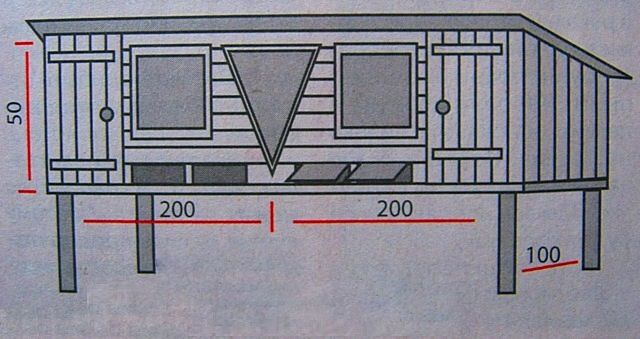

Two-section cage with dedicated "warm rooms"
If the rabbits will be outside all year round, then it is necessary to take care of the insulation of one of the parts of the cage.These animals tolerate low winter temperatures well, but it will still be useful to create comfortable conditions for them and a special place where they can bask on especially cold days and nights.
Indoor cages
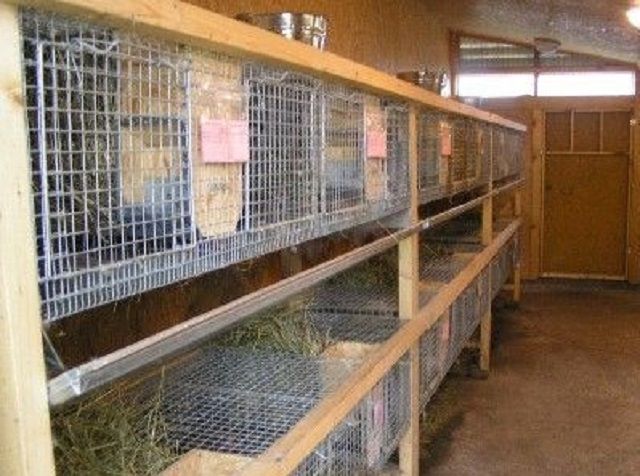

A rabbitry housed in a barn
Cages placed in non-ventilated rooms can be completely made of a metal mesh fixed on a wooden frame, have a wooden slatted floor. If breeding pets is carried out indoors, it is important to think carefully about the convenient disposal of their waste.
Combined version of rabbit breeding
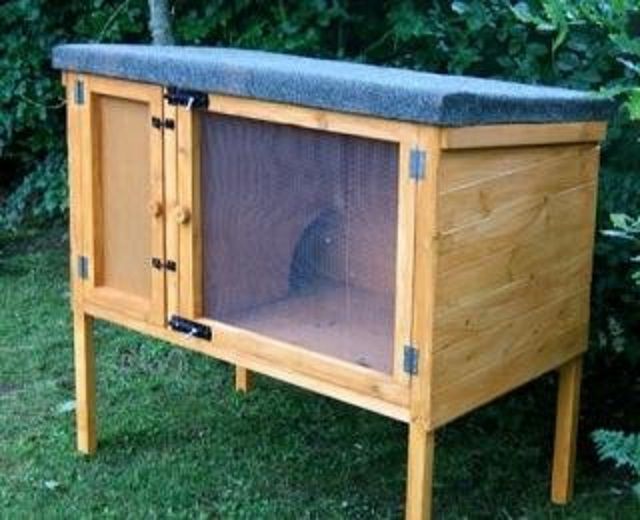

Compact cage that can be easily moved to the desired location
This type of keeping rabbits can be practiced in mobile cages, which are taken outdoors during the warm season, and are installed indoors during the cold season.
In another case, if funds and space permit, the cells are built in two places - both on the street and in the barn. This method of farming is unlikely to suit those farmers who breed a large number of pets, since a fairly large area is required to install winter and summer cages.
Zolotukhin's experience
For the device of a mini-farm for breeding rabbits, the methods of N.I. Zolotukhin, a well-known expert in the field of rabbit breeding with fifty years of experience.
Features of the rabbitry Zolotukhin:
- Three-tiered cells.
- Dry and sloping floor.
- Convenient feeders for hay and grain.
- There is no special queen cell.
The structure accommodates from 3 to 6 adult animals per tier.
Comfortable floor from Zolotukhin
The floor construction was chosen according to observations of the behavior of the rabbits. It turns out that these animals mostly relieve themselves at the back of the cage.
Based on this, in Zolotukhin's rabbitries, the front part of the floor consists of flat slate or a sheet of plywood, installed slightly obliquely (the slope is not more than 6 cm), and in the back of the bottom there is a mesh through which the bulk of feces falls.
Litter made of hay or straw is not used by Zolotukhin. These pet rooms are easy to tidy up because the floors are always dry.
The cages, designed according to the Zolotukhin method, do not have a tray for receiving feces from which manure is removed. Each tier is displaced relative to the other by a "ladder", so the manure, rolling down, falls outside, and not into the cage below.
Convenient feeder from Zolotukhin
The grain feeders, developed by Nikolai Ivanovich, are attached to the rabbitry door and can be easily rotated, which is convenient in maintenance, as it allows you to feed the animals with locked cages, and besides, rats will not get into them.
Placement of a rabbit with a litter
In winter, instead of a permanent queen cell, if necessary, a house is placed in the cage for the rabbit and her offspring. And in the summer, a nest in the hay, fenced off with special partitions, serves as a place for rounding.
If you make a rabbitry with your own hands, guided by the advice of Zolotukhin, then a positive result is guaranteed.
Tools and materials
To make a rabbitry, you need the most common carpentry tools.
To build a rabbitry made of wood and a variety of scrap materials, you need to stock up on:
- a wooden beam with a cross section of at least 60 × 60 mm;
- planed boards 25–30 mm thick;
- slats with a cross section of at least 25 × 40 mm;
- plywood, OSB, plexiglass - for walls and partitions;
- polycarbonate, tin, slate, soft tiles or roofing felt - for the roof;
- mesh with cells of no more than 40 mm for walls, doors and floors;
- furniture dowels;
- nails and screws;
- door hinges, latches, carrying handles.
In the process of work, you will need the usual carpentry and locksmith tools:
- a hammer;
- screwdriver or a set of screwdrivers;
- drill with a set of drills;
- hacksaw for wood and metal;
- jigsaw;
- grinder with a disc for woodwork or an angle circular saw;
- chisel;
- roulette;
- carpentry square;
- bubble level;
- scissors for metal.
When building a rabbitry, safety requirements should not be neglected. Always use a protective eye shield or goggles, and extreme care and attention should be exercised when working with cutting tools.
Mikhailov's mini-farm
The building for breeding rabbits of Academician Mikhailov deserves special attention.
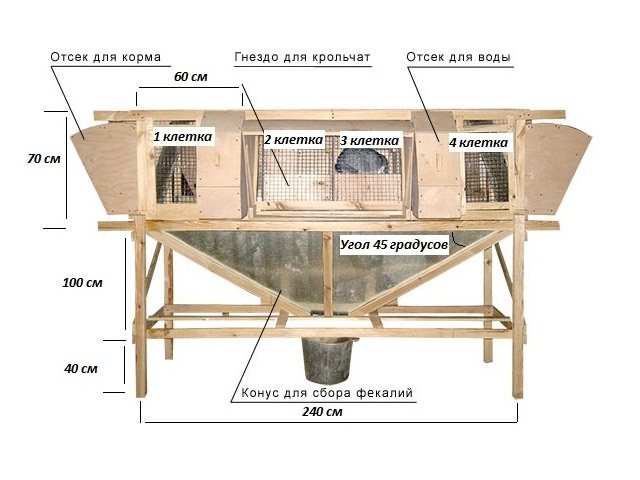

Rabbit farm scheme according to Mikhailov's method
A mini-farm created according to this method assumes rare human participation in the service of animals. In such cages, all conditions are created for the harmonious existence of animals using lighting, self-feeders, the required temperature is maintained in winter, hoods and ventilation are provided.
Specificity of the mini-farm device
Mikhailov's mini-farm allows you to accommodate a fairly large number of animals in a small area with comfort. Up to 25 individuals live in one cage. This is facilitated by the following features:
- Automated feeding mode (self-feeding). Animals receive an unlimited amount of food and drink. In winter, water is heated. Feed and water are added once a week.
- Automatic room cleaning. The excrement and waste goes to a specially designated place.
- Feeders are designed to keep them clean and keep food clean.
- Ventilation removes gases to the outside through a pipe.
- In winter, the rabbitry and the broodstock are heated, which contributes to the regular birth and development of healthy and strong offspring.
- The mini-farm is maximally adapted to the instincts of animals, bringing the conditions closer to natural ones.
- In winter, the northern part of the cages is insulated, and in the summer, ventilation is provided in the southern part.
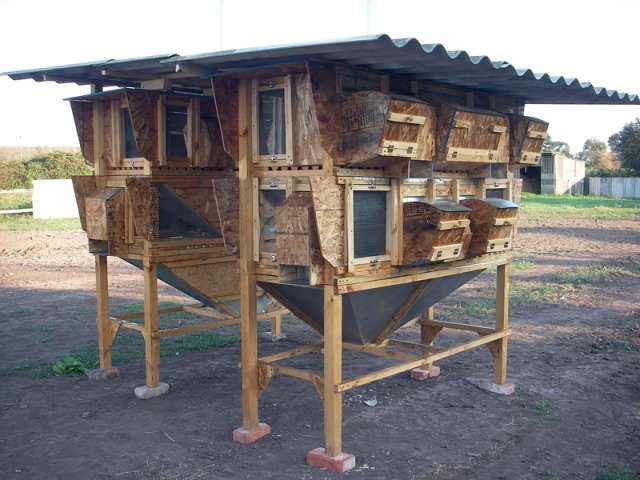

Ready-made rabbitry according to Mikhailov's method
Mikhailov's design is very effective and is used both in personal subsidiary plots and on an industrial scale.
Advantages and differences of industrial cells from homemade structures
Comparing industrial models of rabbit cages with independently designed and manufactured structures, a number of advantages and differences of the former can be noted, namely:
- industrial cages, as a rule, are distinguished by a sophisticated design that takes into account all the features of keeping animals (trays for droppings, nests, feeders, etc.) and ensures ease of use;
- industrial structures allow keeping the maximum number of animals even in relatively small premises;
- the materials used to make industrial cages tend to provide much greater durability compared to homemade structures, often made from not very suitable materials at hand.



